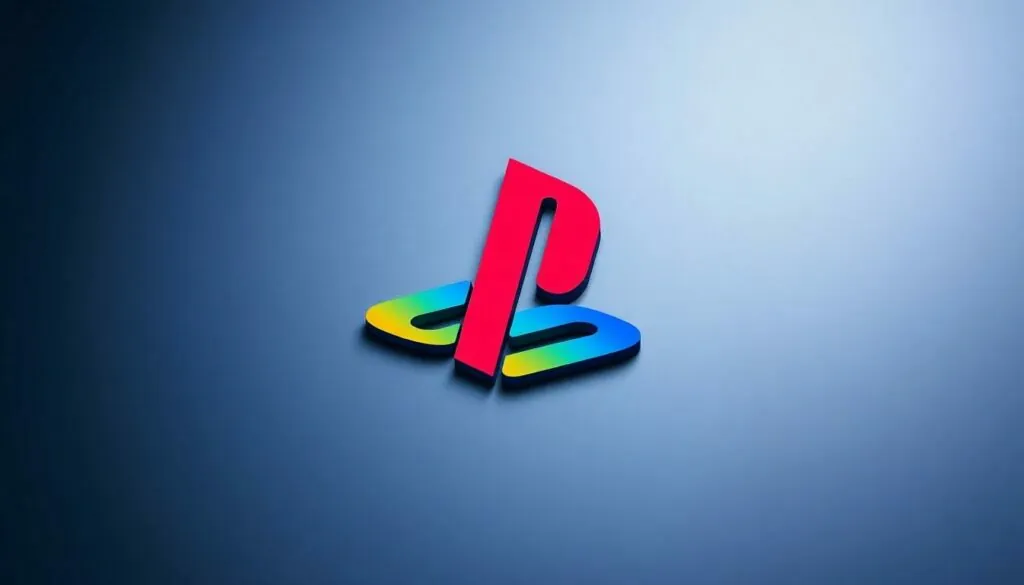Table of Contents
ToggleIn a world where brands battle for attention, the PlayStation logo stands out like a neon sign in a dimly lit arcade. This iconic emblem isn’t just a pretty face; it’s a symbol of gaming excellence that has captured the hearts of millions. From the first PlayStation console to the latest gaming marvel, the logo has evolved, yet its essence remains unchanged—a beacon for gamers everywhere.
But what’s behind that colorful design? It’s not just a random splash of color; it’s a carefully crafted identity that speaks to innovation, creativity, and a dash of nostalgia. Whether you’re a die-hard fan or a casual player, understanding the PlayStation logo’s significance can elevate your appreciation for the gaming universe. So, buckle up as we dive into the fascinating world of this emblem and discover why it’s more than just a logo—it’s a lifestyle.
Overview of Logo PlayStation
The PlayStation logo holds significant value in the gaming world. This iconic symbol features a multidimensional design combining the letters “P” and “S.” Many recognize the logo for its bold colors and simple yet distinctive form.
The logo’s evolution reflects the technological advancements made by Sony Interactive Entertainment over the years. Each iteration connects with a specific console generation, showcasing the brand’s innovation and adaptability. The original PlayStation logo debuted in December 1994, introducing a fresh aesthetic to gaming branding.
In 2000, the logo received a refined look with the launch of the PlayStation 2. The new design maintained its core elements while incorporating modern design trends. Both the PlayStation 3 and PlayStation 4 followed suit, presenting more streamlined versions without losing the recognizable charm.
Recognition spans beyond just gamers; the PlayStation logo acts as a cultural icon. It represents not only a brand but a lifestyle that resonates with millions. Various gaming enthusiasts view the logo both nostalgically and inspirationally, making it a significant part of their experiences.
Many gaming events incorporate the PlayStation logo, reinforcing its widespread presence. Prominent showcases like E3 and Gamescom feature the logo prominently, continuously connecting the brand with major releases and announcements. The logo’s enduring impact solidifies its place in the history of the gaming community.
Evolution of Logo PlayStation
The PlayStation logo has undergone significant changes, reflecting both its identity and advancements in gaming design. A blend of visual creativity and branding speaks to its lasting impact.
Early Designs
The PlayStation logo made its debut in December 1994, featuring a vibrant mix of colors and geometric shapes. A distinctive “P” and “S” intertwined created a recognizable silhouette. This design captured attention quickly, symbolizing cutting-edge technology of that era. The logo’s bold colors, particularly the blue, red, yellow, and green, set it apart. Such an approach represented innovation and fun that appealed to gamers of all ages. Designers aimed for a playful yet professional look, aligning with the youthfulness of the PlayStation brand.
Modern Iterations
In 2000, the PlayStation 2 logo introduced a more refined aesthetic, incorporating a sleek font and a muted color palette. Subtle changes in the layout emphasized modernity while retaining the original essence. The PlayStation 3 logo followed suit with a streamlined, minimalistic design that resonated with contemporary trends. Each iteration conveyed technological progress alongside user expectations. A sense of nostalgia remained intact through these transformations, embodying the brand’s connection with its audience. The PlayStation 4 logo further evolved, aligning with the trend towards simplicity in design, yet keeping the core elements that defined its legacy.
Significance of Logo PlayStation
The PlayStation logo signifies more than just a brand; it represents a captivating identity in the gaming world. This logo connects the PlayStation consoles, showcasing both innovation and nostalgia for gamers.
Brand Identity
The logo embodies the essence of the PlayStation brand, combining familiarity with modern design. Distinctive elements from previous iterations maintain recognition across the generations of consoles. Bold colors and the intertwined “P” and “S” create a memorable image, attracting gamers of all ages. Each design iteration not only reflects technological advancements but also emphasizes a commitment to quality and creativity. The logo communicates a sense of belonging within the gaming community, reinforcing brand loyalty among players.
Cultural Impact
Significantly, the PlayStation logo has become a cultural icon beyond gaming. It appears at major events, such as E3 and Gamescom, reinforcing its visibility and impact within pop culture. Recognition extends beyond gaming enthusiasts, resonating with various demographics. The logo inspires merchandise, fan art, and even tattoos, showcasing its pervasive influence. Furthermore, it evokes feelings of nostalgia for unforgettable gaming experiences, intertwining with personal memories of countless players. The logo captures a lifestyle perspective, symbolizing not only gameplay but also shared moments and connections among gamers.
Logo PlayStation in Marketing
The PlayStation logo serves as a powerful marketing tool, captivating audiences across the globe. Its memorable design enhances brand recognition, ensuring that gamers and non-gamers alike instantly associate it with innovation. This logo stands out in advertising campaigns, often featured prominently alongside major product launches.
Engagement with consumers increases each time the logo appears during high-profile events like E3 or Gamescom. Strong visibility at these events solidifies its presence in the gaming culture. Marketers leverage the logo’s nostalgic appeal, connecting with long-time gamers while introducing the brand to new audiences.
Widely recognized, the PlayStation logo embodies values like creativity and excellence, which resonate with the gaming community. Its multidimensional design conveys a sense of depth and sophistication, enhancing its allure. Various promotional materials incorporate the logo, showcasing its ability to adapt to contemporary design trends.
Merchandise featuring the logo, such as apparel and collectible items, has become a staple among fans. Gamers often wear or display these products, further promoting the PlayStation brand. Marketing strategies capitalize on this phenomenon by creating limited edition items that emphasize the logo’s significance.
The logo’s evolution reflects the dynamic nature of the gaming industry. Its journey from the original design in 1994 to the more refined versions in recent years illustrates ongoing growth. Consistent branding efforts ensure that the logo remains relevant, resonating with both old and new generations of gamers, thus reinforcing the PlayStation’s market position.
Conclusion
The PlayStation logo serves as a powerful emblem of gaming culture that transcends generations. It embodies the spirit of innovation and nostalgia while establishing a strong connection with its audience. Each evolution of the logo reflects not only technological advancements but also the enduring legacy of the PlayStation brand.
As a cultural icon, it resonates with gamers worldwide, fostering a sense of belonging and loyalty. Its presence at major gaming events and in various merchandise further solidifies its significance. The logo’s impact goes beyond design; it represents a lifestyle that continues to inspire and unite the gaming community.








